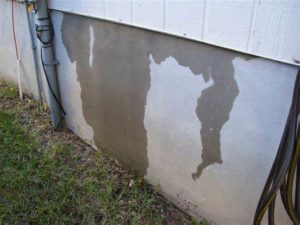How To Repair Your Slab Leak In San Diego?
Dealing with a slab leak can be a homeowner’s nightmare. Slab leaks occur when there’s a water leak underneath the concrete slab foundation of your home. Not only can they cause significant damage to your property, but they can also lead to mold growth and other health hazards if left untreated. Fortunately, there are several ways to repair a slab leak and prevent further damage. In this article, we’ll discuss five effective methods for addressing slab leaks and provide answers to some frequently asked questions.
Identify the Location of the Leak
Before you can repair a slab leak, you need to pinpoint its exact location. There are several methods for locating a slab leak, including using specialized equipment such as electronic leak detection devices and thermal imaging cameras. Once the leak’s location is identified, you can decide on the most suitable repair method. Keep in mind that early detection is crucial to prevent extensive damage to your home’s foundation and plumbing system.
Repiping
One of the most common ways to repair a slab leak is through repiping. Repiping involves replacing the damaged section of the pipe with a new one. This method is particularly effective if the leak is isolated to a specific area, and the rest of the plumbing system is in good condition. Repiping can be done using materials like copper, PEX, or PVC, depending on your preference and budget.
Pipe Relining
Pipe relining is a less invasive method of repairing slab leaks. It involves inserting a flexible liner into the damaged pipe and sealing it to prevent further leakage. This technique is suitable for pipes with minor leaks or small cracks and is often less disruptive and costly than repiping. Pipe relining can extend the lifespan of your plumbing system and minimize the need for extensive excavation.
Epoxy Pipe Coating
Epoxy pipe coating is another non-invasive approach to slab leak repair. In this method, a special epoxy resin is applied to the inside of the damaged pipe, creating a seamless and corrosion-resistant barrier. Epoxy coating not only repairs the leak but also prevents future leaks from occurring. It is a cost-effective solution that can save you money on future plumbing repairs and water bills.
Tunneling and Excavation
In cases where the slab leak is extensive or cannot be repaired through other methods, tunneling and excavation may be necessary. This method involves digging a tunnel or excavating the area around the leak to access the damaged pipe. Once the pipe is exposed, it can be repaired or replaced as needed. While tunneling and excavation are more invasive and costly, they are sometimes the only viable option for severe slab leaks.
FAQs
How Can I Tell If I Have A Slab Leak?
Common signs of a slab leak include unexplained increases in your water bill, wet or damp spots on your floors, the sound of running water when no taps are on, and a drop in water pressure. If you notice any of these signs, it’s essential to have a professional plumber inspect your home for potential slab leaks.
Are Slab Leaks Covered By Homeowners’ Insurance?
Whether or not slab leaks are covered by homeowners’ insurance depends on your policy and the cause of the leak. In many cases, insurance may cover the cost of repairing the slab leak and the resulting damage if it’s sudden and accidental. However, gradual leaks or leaks caused by neglect may not be covered.
How Can I Prevent Slab Leaks In The Future?
To prevent slab leaks, it’s essential to maintain your plumbing system regularly. This includes inspecting and repairing any visible leaks, ensuring proper insulation, and monitoring your water pressure. Additionally, avoiding harsh chemicals and corrosion-inducing substances in your plumbing can help extend the lifespan of your pipes and reduce the risk of future slab leaks.
Please call Frasers Plumbing at (619) 332-0275 for any and all of your plumbing needs.
Conclusion
Give Fraser Plumbing Inc. a call right away to learn more about how our experts can help with leak detection in San Diego, CA.

